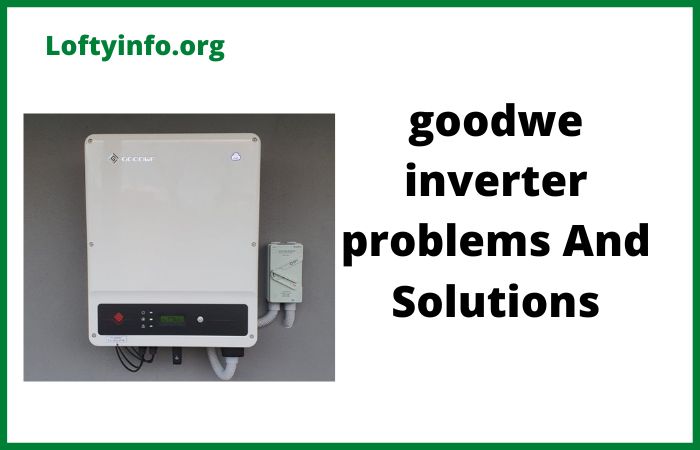Inverter Overcharging Problem: Causes and Solutions
Inverter overcharging is one of the most common yet overlooked problems that can significantly reduce battery life and performance.
When an inverter continuously charges a battery beyond its optimal capacity, it creates a cascade of issues that can lead to permanent damage, reduced efficiency and even safety hazards.
Understanding the root causes of this problem is essential for anyone relying on inverter systems for backup power or off-grid applications.
What Is Inverter Overcharging?
Inverter overcharging occurs when the charging circuit fails to properly regulate the voltage and current supplied to the battery once it reaches full capacity.
Instead of switching to a maintenance or float charge mode, the inverter continues to pump excessive energy into the battery causing electrolyte loss, plate corrosion and thermal buildup.
Causes of Inverter Overcharging Problems
1. Faulty Voltage Regulation Circuitry
The voltage regulation circuit is the heart of proper battery charging management.
When components like voltage regulators, control ICs or feedback circuits malfunction, the inverter loses its ability to monitor and control the charging voltage accurately.
This malfunction often stems from component aging, thermal stress or manufacturing defects.
A faulty regulator may continue supplying 14.4V or higher to a 12V battery system even after the battery reaches full charge, instead of dropping to the proper float voltage of around 13.2-13.8V.
2. Defective Battery Sensing Mechanisms
Modern inverters rely on sophisticated battery sensing systems to determine the state of charge and adjust charging parameters accordingly.
These systems typically include voltage sensors, current sensors, and sometimes temperature compensation circuits.
When these sensing mechanisms fail or provide inaccurate readings, the inverter receives false information about the battery’s actual condition.
For instance, a damaged voltage sensor might report that the battery is at 70% capacity when it’s actually at 100%, causing the inverter to continue aggressive charging when it should transition to maintenance mode.
3. Incorrect Charging Profile Configuration
Many inverters allow users to configure charging profiles based on battery type but incorrect settings can lead to persistent overcharging.
Each battery chemistry requires specific charging voltages, current limits, and charging stages.
Lead-acid batteries need different parameters than lithium-ion or AGM batteries.
When the wrong profile is selected or when generic settings are used for specialized batteries, the inverter may apply inappropriate charging voltages throughout the charging cycle.
This misconfiguration often happens during installation when technicians use default settings without properly matching them to the specific battery system.
4. Temperature Compensation System Failures
Battery charging requirements change significantly with temperature variations.
A properly functioning inverter includes temperature compensation circuits that adjust charging voltages based on ambient or battery temperature.
When these systems fail, the inverter may continue using standard charging voltages regardless of temperature conditions.
In hot environments, batteries require lower charging voltages to prevent overcharging and thermal runaway.
Cold conditions typically require slightly higher voltages.
A failed temperature sensor or compensation circuit can result in the inverter applying summertime charging voltages during winter conditions or vice versa.
5. Aging or Degraded Control Software
Modern inverters rely heavily on embedded software and firmware to manage charging algorithms.
Over time, software bugs, corrupted memory or degraded programming can cause the control system to malfunction.
These issues might manifest as stuck charging states, where the inverter fails to recognize charge completion signals or becomes locked in bulk charging mode.
Software-related overcharging problems are particularly frustrating because they may appear intermittently or develop gradually as memory corruption accumulates.
Firmware updates can sometimes resolve these issues but in many cases, the control board may need replacement.
6. Failed Charge Termination Detection
Proper charge termination is crucial for preventing overcharging, and inverters use various methods to detect when batteries reach full capacity.
These methods include voltage peak detection, current tapering analysis, and time-based algorithms.
When charge termination detection fails, the inverter cannot recognize that the battery is fully charged and continues the charging process indefinitely.
This failure often occurs due to damaged components in the monitoring circuits, calibration drift in measurement systems or interference from electrical noise that masks the subtle signals indicating charge completion.
Some inverters rely on multiple termination methods for redundancy, but component failures can compromise these backup systems.
The Consequences of Continuous Overcharging
Understanding these causes is crucial because overcharging creates a destructive cycle that accelerates battery degradation.
Excessive charging current generates heat, which increases internal resistance and reduces capacity.
The elevated temperatures cause electrolyte evaporation in flooded batteries and can trigger thermal runaway in sealed systems.
Overcharging also promotes plate corrosion and active material shedding, permanently reducing the battery’s ability to hold charge.
Prevention and Monitoring Strategies
Regular monitoring of charging voltages, battery temperatures, and electrolyte levels can help identify overcharging problems before they cause permanent damage. Installing independent battery monitors, checking charging profiles periodically and ensuring proper ventilation around battery systems are essential preventive measures.
Additionally, investing in quality inverters with robust charging control systems and multiple safety features can significantly reduce the likelihood of overcharging issues.
Conclusion
Inverter overcharging is a multifaceted problem that requires understanding both the electrical and mechanical aspects of charging systems.
By recognizing these six primary causes and implementing appropriate monitoring and maintenance practices, users can protect their battery investments and ensure reliable long-term performance from their inverter systems.
Regular professional inspections and proactive component replacement can prevent most overcharging scenarios and extend battery life significantly.
The key to preventing overcharging lies in understanding that proper battery charging is not just about supplying power but about intelligently managing that power delivery throughout the entire charging cycle.
When any component in this complex system fails, the results can be costly and potentially dangerous.
why inverter on and off frequently
Why inverter battery slow charging problem occurs
Why microtek inverter overload problems occur
Why luminous inverter high voltage problems occur
Causes of luminous zelio 1100 inverter overload problems
Bluetti ac200p problems and solutions
Luminous inverter charging problem
How to make solar generators last longer






